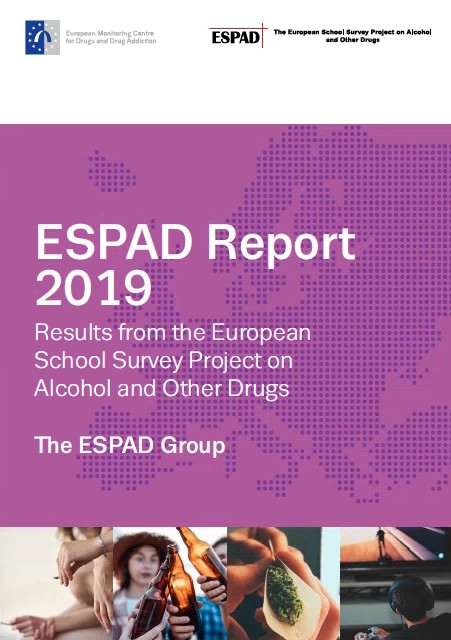Smoking and drinking among 15–16-year-old school students are showing signs of decline, but there are concerns over potentially risky cannabis use and the challenges posed by new addictive behaviours. These are among the findings released today in a new report from the European School Survey Project on Alcohol and Other Drugs (ESPAD). The study, published in collaboration with the EU drugs agency (EMCDDA), is based on a 2019 survey in 35 European countries, including 25 EU Member States (1).
This is the seventh data-collection wave conducted by the ESPAD project since 1995. A total of 99 647 students participated in the latest survey round, responding to an anonymous questionnaire. The ESPAD Report 2019 features information on students’ experience of, and perceptions about, a variety of substances, including: tobacco, alcohol, illicit drugs, inhalants, pharmaceuticals and new psychoactive substances (NPS). Social media use, gaming and gambling are also covered.
To keep up with emerging risk behaviours among young people in Europe, the ESPAD questionnaire is constantly adapted to include new topics, while maintaining a set of core questions to track long-term trends. To better describe contemporary patterns of nicotine consumption, the scope of the 2019 survey was extended to include e-cigarette smoking for the first time in all participating countries. Screening instruments were also employed to assess risk behaviours, including problem gambling, high-risk cannabis use and self-perceived problems with social media use and gaming (2).
Decline in teenage drinking and cigarette smoking and new insights into e-cigarette use
Alcohol use remains high among adolescents in Europe, with an average of over three-quarters (79%) of school students having used alcohol in their lifetime and almost half (47%) having used it in the last month (‘current use’)(3). But trend data (4) show some steady decreases, with levels now lower than in 2003 when both peaked at 91% and 63% respectively.
The prevalence of ‘heavy episodic drinking’ (5) reached its lowest level in the 2019 survey (35%), following a peak in 2007 (43%) (Table 14). Data show that the gender gap in the prevalence of this pattern of alcohol use has narrowed over time (boys 36%; girls 34%) (Figure 20). Changes in drinking regulations at national level may have contributed to the decline in alcohol use among young people.
Positive developments are also seen with regard to teenage smoking, against a backdrop of tobacco policy measures introduced over the last two decades. Between 1995 and 2019, ESPAD averages for cigarette use declined for lifetime use (68% to 42%); current use (33% to 20%) and daily use (20% to 10%). New data reveal high prevalence of e-cigarette smoking — 40% for lifetime use and 14% for last-month use — with those who have never smoked cigarettes (‘never smokers’) reporting higher rates of this behaviour than ‘occasional smokers’ and ‘regular smokers’. Although the study did not investigate the contents of e-cigarettes, it is likely that a high proportion of these devices include nicotine and that overall adolescent nicotine use could be rising again. This issue calls for further investigation given the potential for public health consequences.
More information: https://www.emcdda.europa.eu/news/2020/9/highlights-espad-2019_en
(1) The report (in English) and data underpinning the analysis are available online at on the EMCDDA website and a dedicated ESPAD landing page. Tables can be downloaded in Excel format.
(2) Screening tools: the CAST scale for cannabis (Legleye et al., 2007, 2011), the Lie/Bet Questionnaire for gambling (Johnson et al., 1997), and an adapted screening tool for social media and gaming (based on Holstein et al., 2014).
(3) The percentages noted in this news release are ESPAD averages (non-weighted average of national averages).
(4) For ESPAD temporal trends, country estimates were averaged across 30 countries with valid estimates on at least four (including 2019) out of seven time points.
(5) Five or more drinks on at least one occasion in the last 30 days.
















